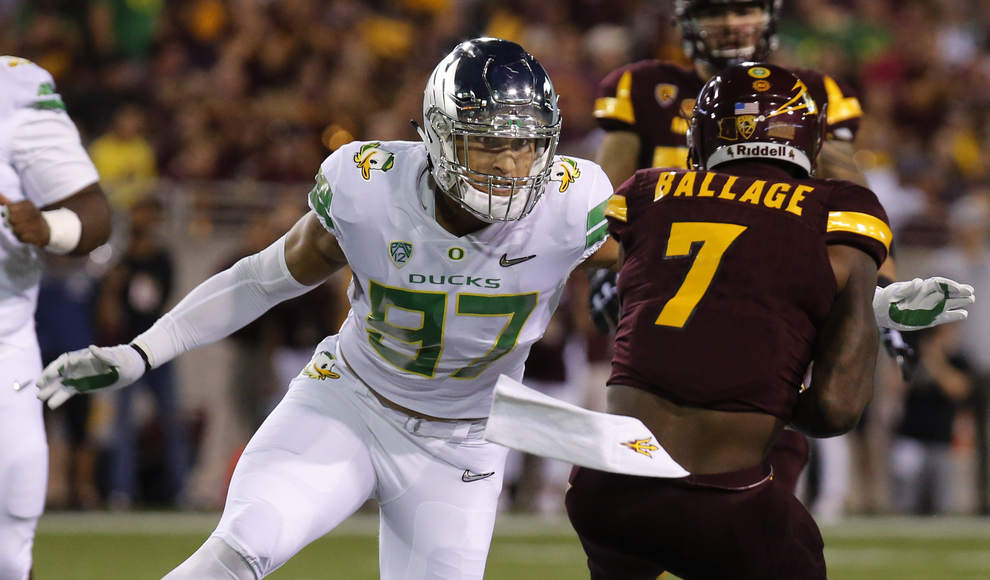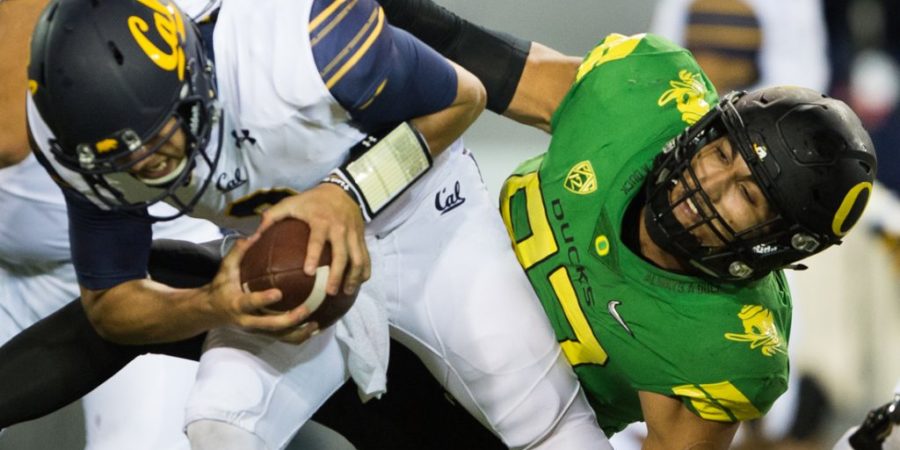It’s no secret that the Oregon defense is loaded with experienced front line talent up and down the starting lineup and portions of the the two-deep. In total, the Ducks return 11 players who started at least one game a year ago; a group that doesn’t include regulars such as redshirt junior defensive lineman Gary Baker and redshirt sophomore safety Brady Breeze.
But beyond the hopefully outlook and inarguable fact that the Duck defense is trending way up under defensive coordinator Jim Leavitt, there are very real concerns surrounding the depth on that side of the football. Defensive line is one position where, beyond the relatively steady core comprised of Austin Faoliu, Jordon Scott, Jalen Jelks, and the aforementioned Baker, the Ducks have a host of players with little (see Bryson Young, Gus Cumberlander, and Drayton Carlberg) to no playing experience at the FBS level (see Popo Aumavae, Sione Kava, and Andrew Faoliu).
Depth is perhaps even more suspect at the outside linebacker positions, where the Ducks have roughly three players they can rely on this season in Justin Hollins, La’Mar Winston, and Keith Simms.
To combat that, the Ducks’ defensive brain trust has gotten experimental during fall camp, specifically as it relates to shifting Jelks from his tried and true defensive end position to outside linebacker. It’s here where Jelks’ athleticism and imposing 6-foot-6 and 245-pound frame more or less fits the prototype for what is found in the NFL at the hybrid “rush end” position in a 3-4 defense.

At defensive end a season ago, Jelks was hands down the defense’s top breakout performer, leading the Ducks in both tackles for loss (15) and sacks (6.5), while finishing fifth on the team in total tackles (58). Given his tremendous impact at defensive end, a potential move to outside linebacker doesn’t come without at least a small dose of trepidation. This chiefly relates to Jelks’ ability to play in space and provide some measure of support in coverage, while still proving to be a consistent threat crashing the edge and making plays behind the line of scrimmage.
In truth, the experimentation with Jelks is more likely than not an exercise in figuring out just how multiple the Ducks can be defensively, opposed to anything that resembles a permanent move. Certain defensive packages cooked up by Leavitt may call for additional pass rushers or for pressure to be generated from different defensive looks, in which case, Jelks’ versatility comes quite handy. Additionally, if injury strikes the outside linebacker group, it’s nice to know you can address potential depth concerns with a player like Jelks who has the attributes to fulfill the role without there being a significant drop-off in production.
With one more season left in Eugene before the NFL comes calling, the experimentation with Jelks is a savvy move on part of the Oregon coaching staff to both maximize his skill-set and cover their bases should depth be tested. And with Jelks projected to fit into a hybrid role at the next level, it’s an opportunity for the Phoenix native to demonstrate his proficiency in playing the position.
The only questions are, how frequently is Jelks utilized in this spot and what kind of results could it ultimately yield?
With only weeks to go before the start of the season, it’s becoming clear that this will be one of the more intriguing developments to monitor as the coming weeks and months unfold.

